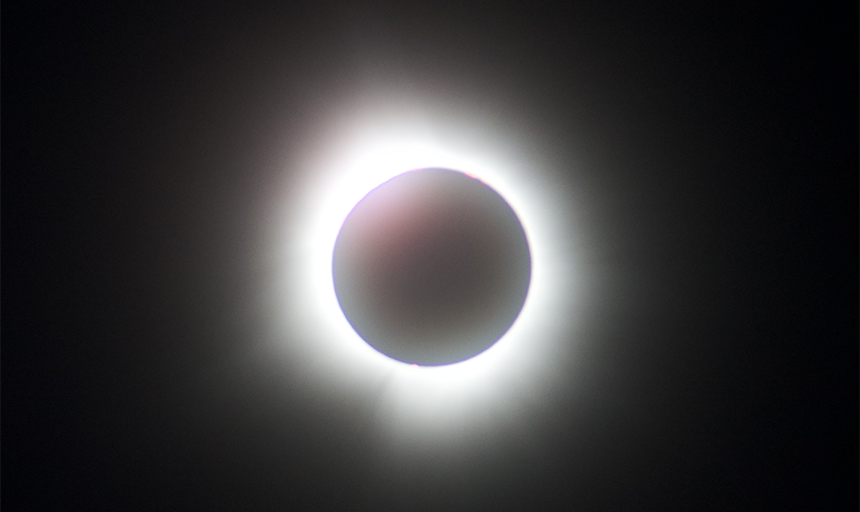
As many as 500 people gathered on Roanoke College’s Back Quad Monday afternoon to watch the skies for a glimpse of the moon moving in front of the sun. On campus, the eclipse covered the sun at 86%. Cloudy skies were a challenge but didn’t dampen the enthusiasm of students, faculty and staff. Cheers erupted when the sun broke through the clouds for brief moments.
Truong Le, a visiting assistant professor in the Math, Computer Science and Physics Department, along with some of the students in his course INQ 250: Astronomy Controversies, hosted the eclipse-viewing event. They set up telescopes with solar filters and provided free eclipse glasses.
Kaylen Ayres ’25 captured a great shot of a crescent sun showing from behind the moon with the clouds helping to act as a filter.
Hayden Hanke ’26 traveled to Cleveland, Ohio, to see the eclipse in totality. Hanke is an environmental studies major with a passion for astrophotography. He had great weather for the day and captured some amazing images, which the College shared on Instagram.
“Experiencing a total solar eclipse evokes a deeper appreciation for every factor that perfectly aligned to allow such an event to occur,” Hanke said. “My photography is a way for me to preserve and document the beauty of our world and events like total solar eclipses.”
Professor Liz Ackley, Roanoke’s Brian H. Thornhill Professor of Health and Human Performance, traveled with friends to Lucas, Ohio, where they rented a 13-acre farm with a lake. “When totality hit, it was four solid minutes of darkness,” she said. “The wind picked up, the frogs at the water began peeping, it became noticeably colder and even the dogs started barking. We could see solar flares in the ring off the moon, and I could even see constellations with my naked eye during totality. What a cool experience!”
Professor Hannah Robbins, associate professor of mathematics, traveled with her family to Bloomington, Indiana to see totality. “My sister and I went to Tennessee for the last eclipse and convinced the others that a total eclipse is WAY more impressive than partial,” she said.
Professor Bonnie Price, a lecturer in physics, met up with her sons in Texas but ended up driving to Conway, Arkansas chasing sunny skies for the big day. They set up at a public park to watch the eclipse and take pictures. “We had so many cameras between the five of us that people asked if taking photographs of eclipses was our job,” she said. Price said they met people from Seattle and New York who traveled to see it and others from Conway. “At totality, the ambient air temperature dropped from 84 degrees Fahrenheit to 67 degrees Fahrenheit, and Venus, Jupiter, and Mars were visible,” Price said. “The birds that had been chirping in the park trees were quiet and a collective gasp of amazement from the viewers could be heard. There seemed to be so much to do and experience during the three minutes and 53 seconds of totality that it went by too quickly!”
2024 Solar Eclipse on campus and from traveling Maroons
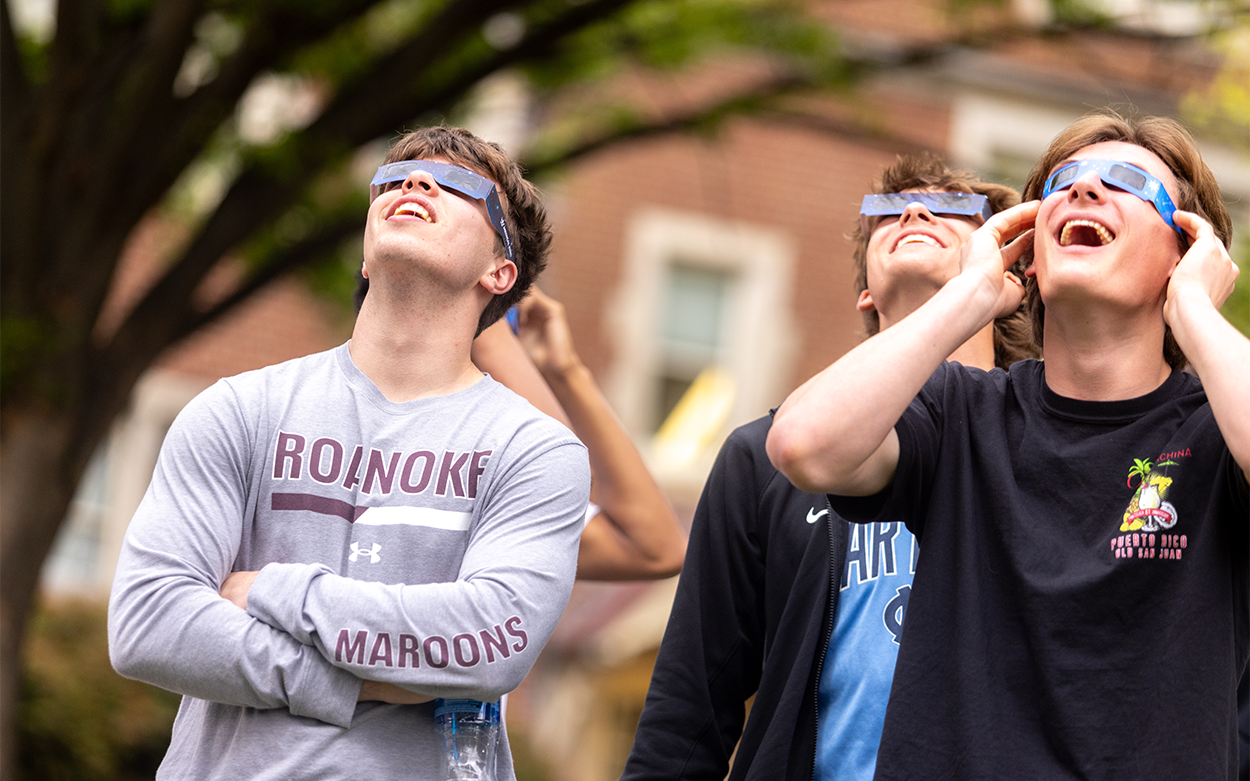
Student look toward the sky wearing eclipse glasses.
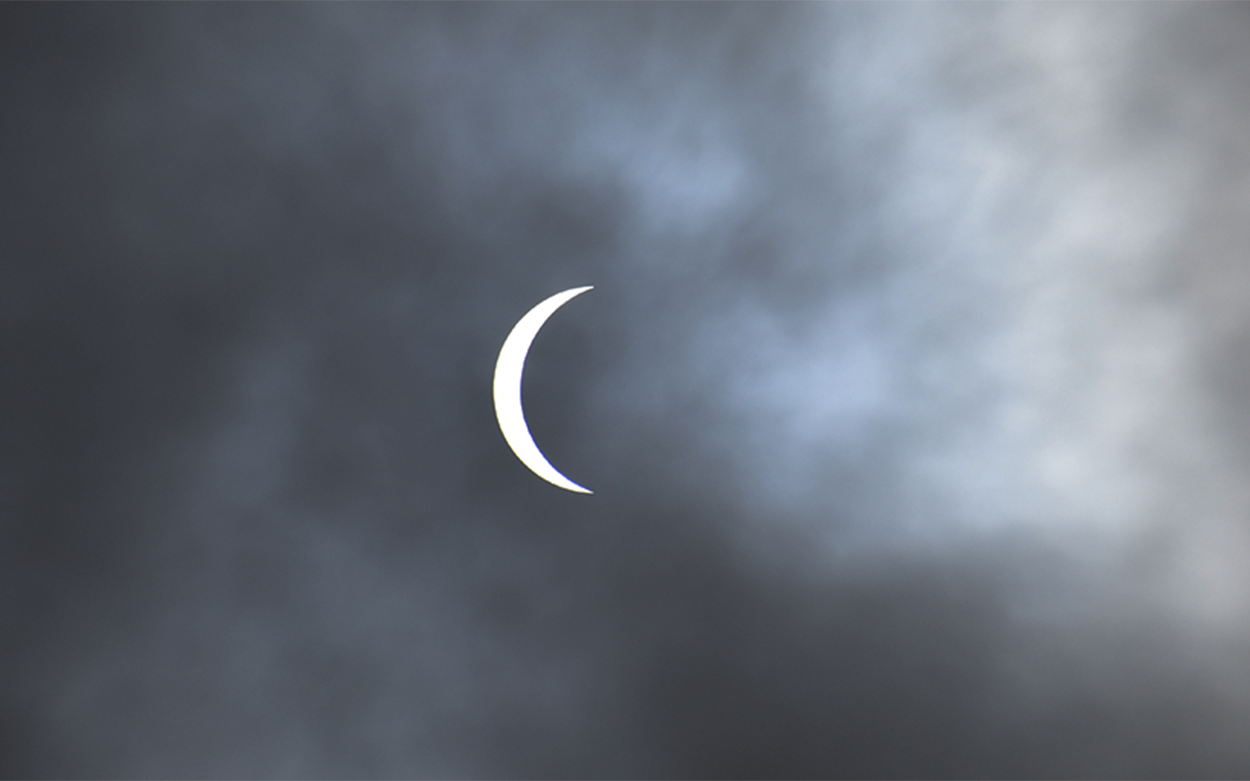
Crescent sun shows through the clouds during the solar eclipse in this photo taken by Roanoke student Kaylen Ayres '25.
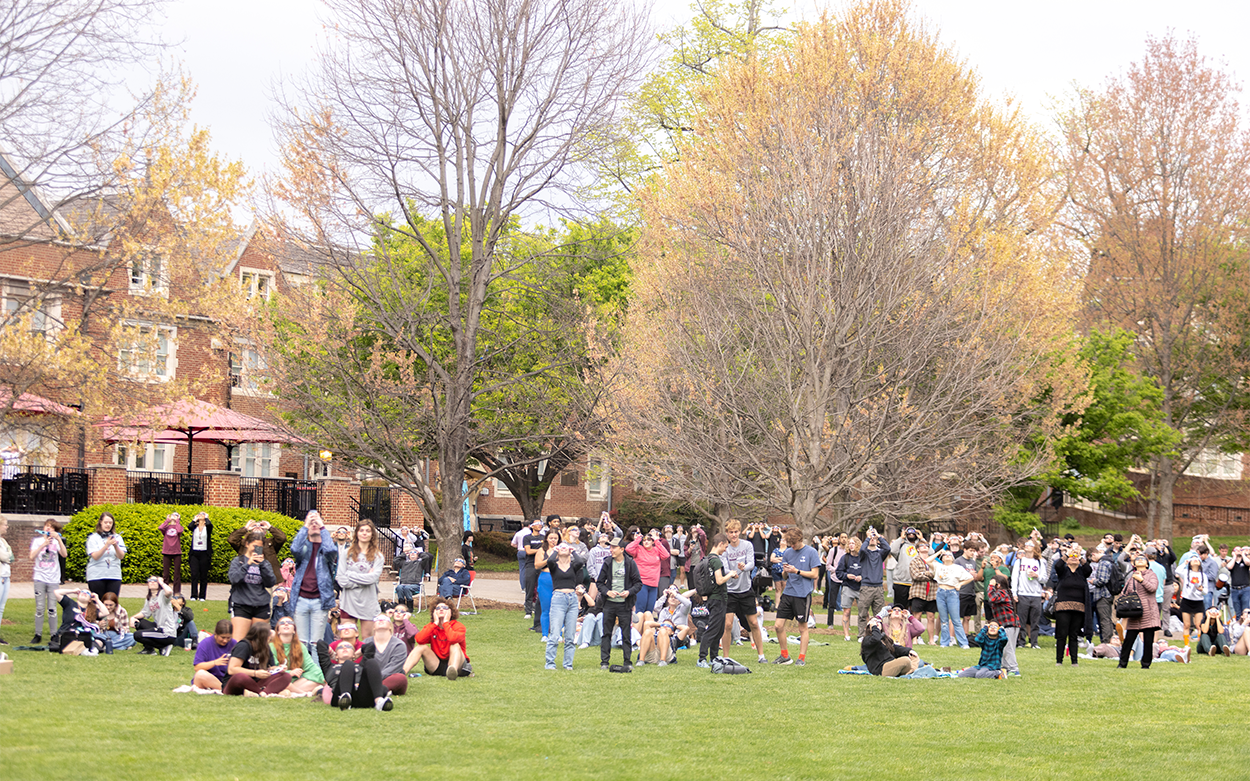
Approximately 500 people gathered on the Back Quad to watch the eclipse.
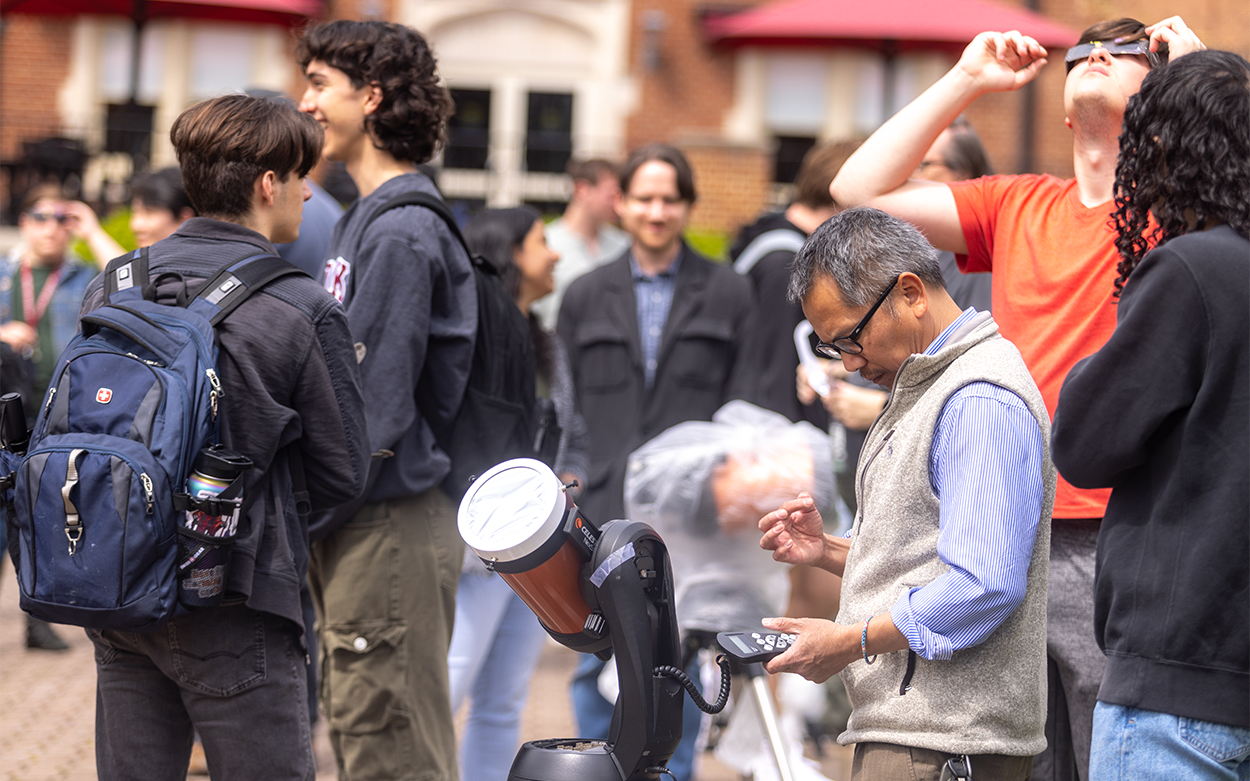
Truong Le, a visiting assistant professor in the Math, Computer Science and Physics Department, adjusts a telescope as the eclipse time approaches.
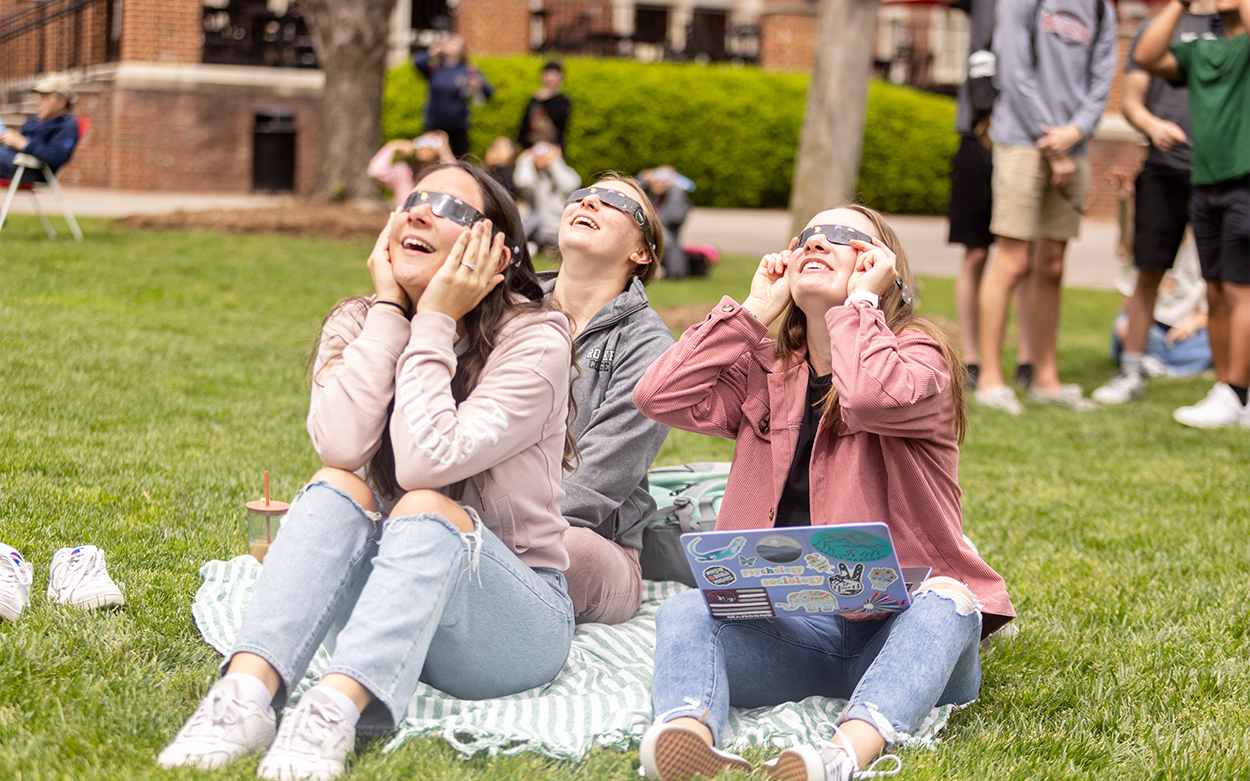
Students watch for breaks in the clouds.
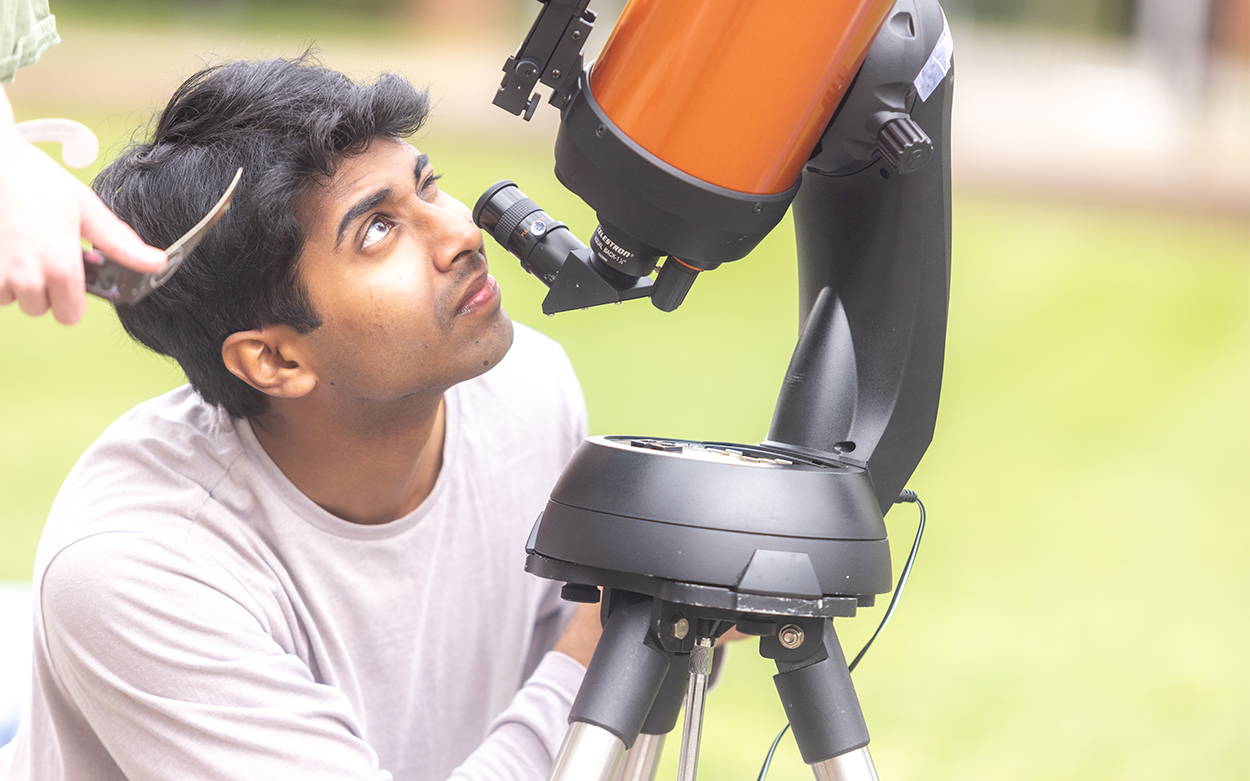
A student checks out the view through the telescope.
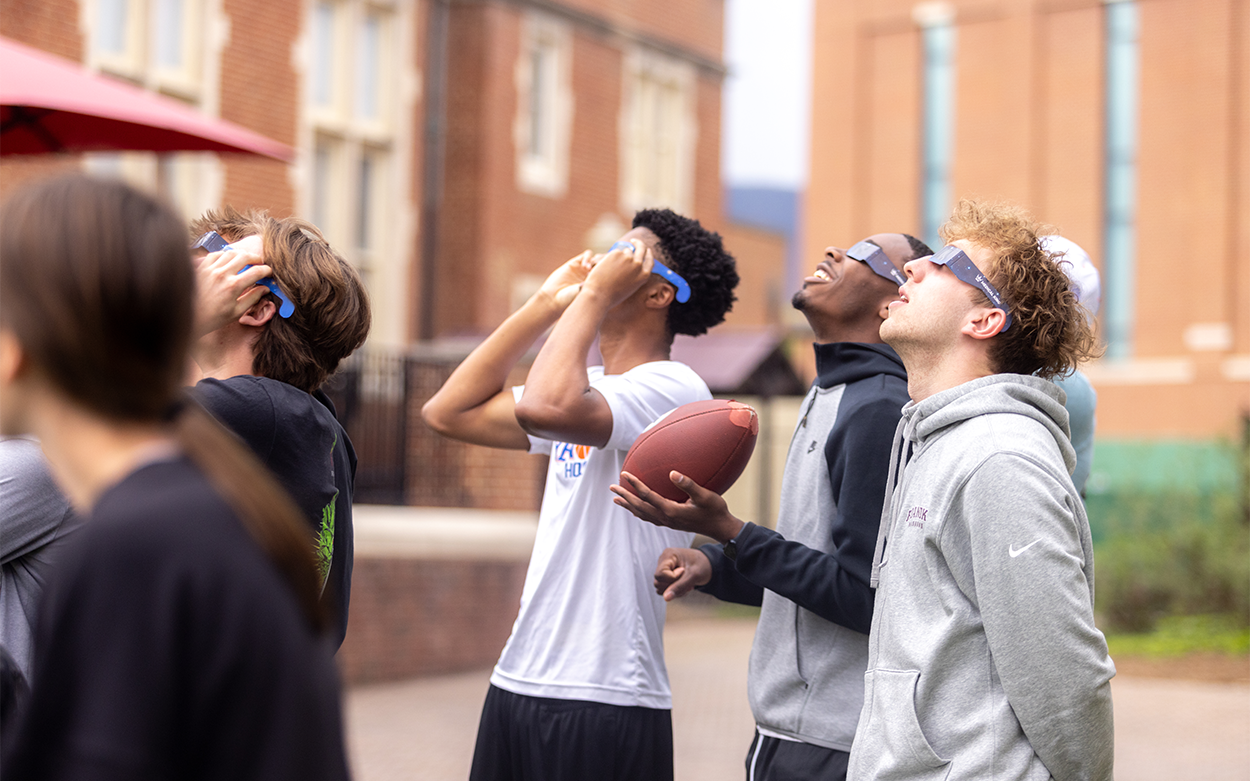
Students take a break from an informal football game to watch for the solar eclipse.
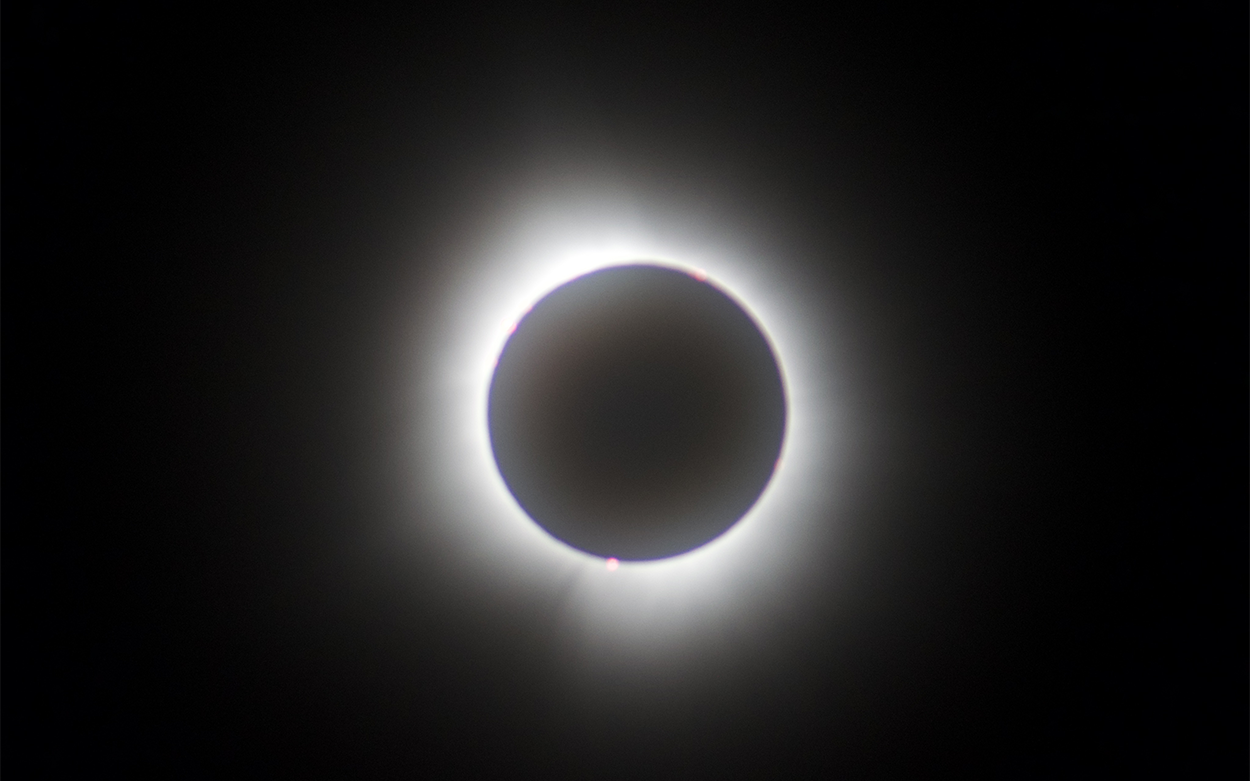
Total solar eclipse as viewed in Cleveland, Ohio. By Roanoke student Hayden Hanke '26.
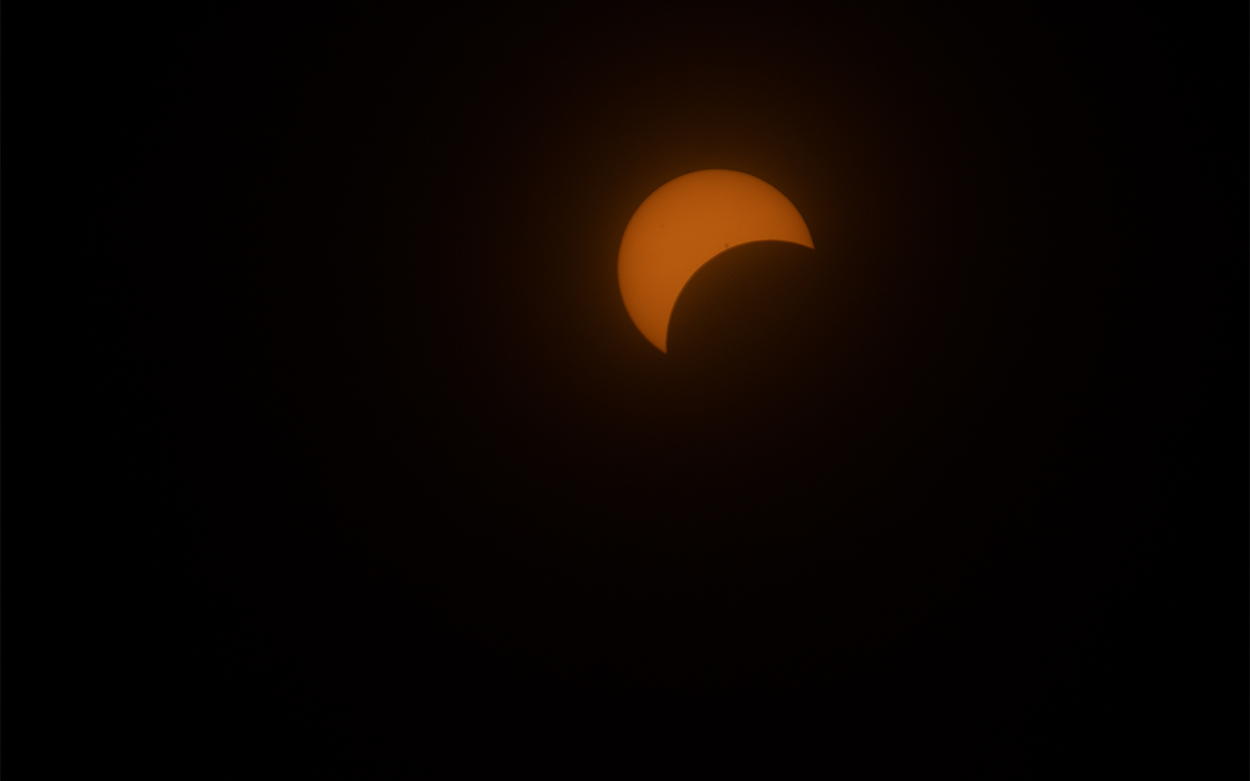
Solar eclipse in progress. Taken by Roanoke student Hayden Hanke '26 in Cleveland, Ohio.
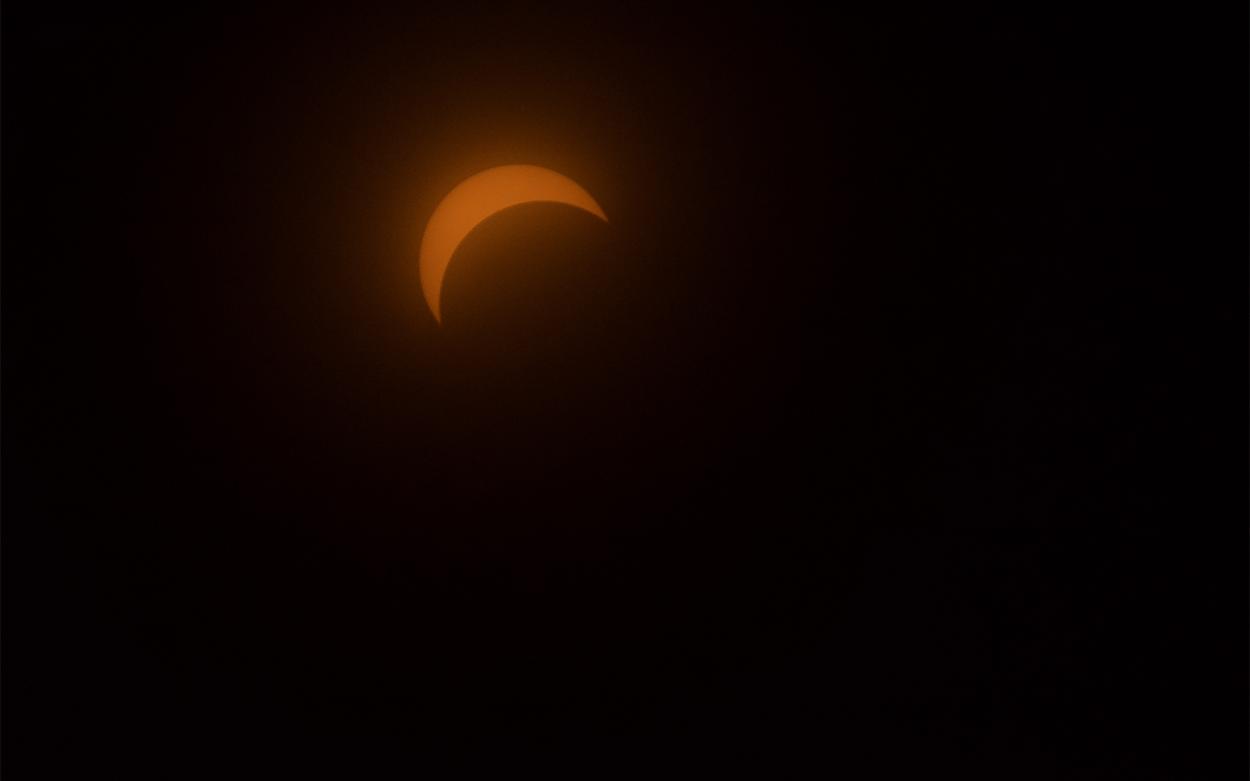
Solar eclipse in progress. Taken by Roanoke student Hayden Hanke '26 in Cleveland, Ohio.
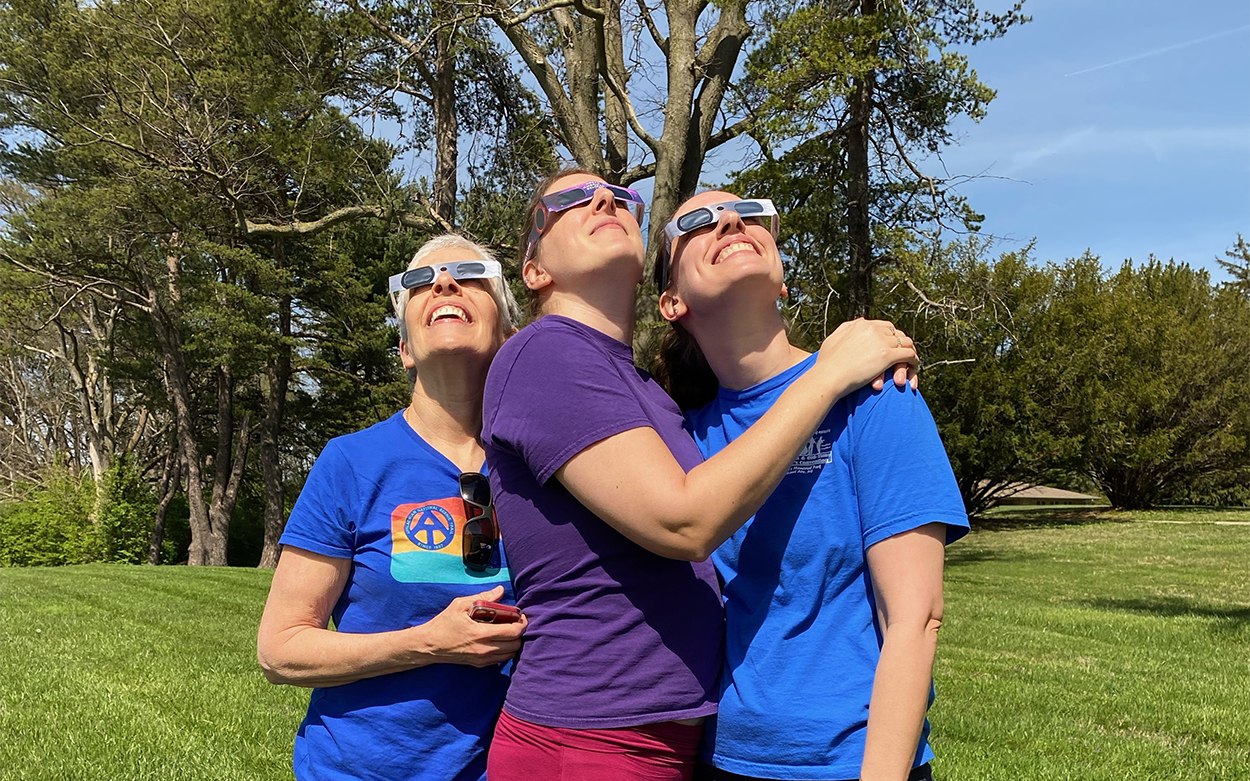
Hannah Robbins and her family look skyward in their eclipse glasses while they watch the total solar eclipse in Bloomington, Indiana.
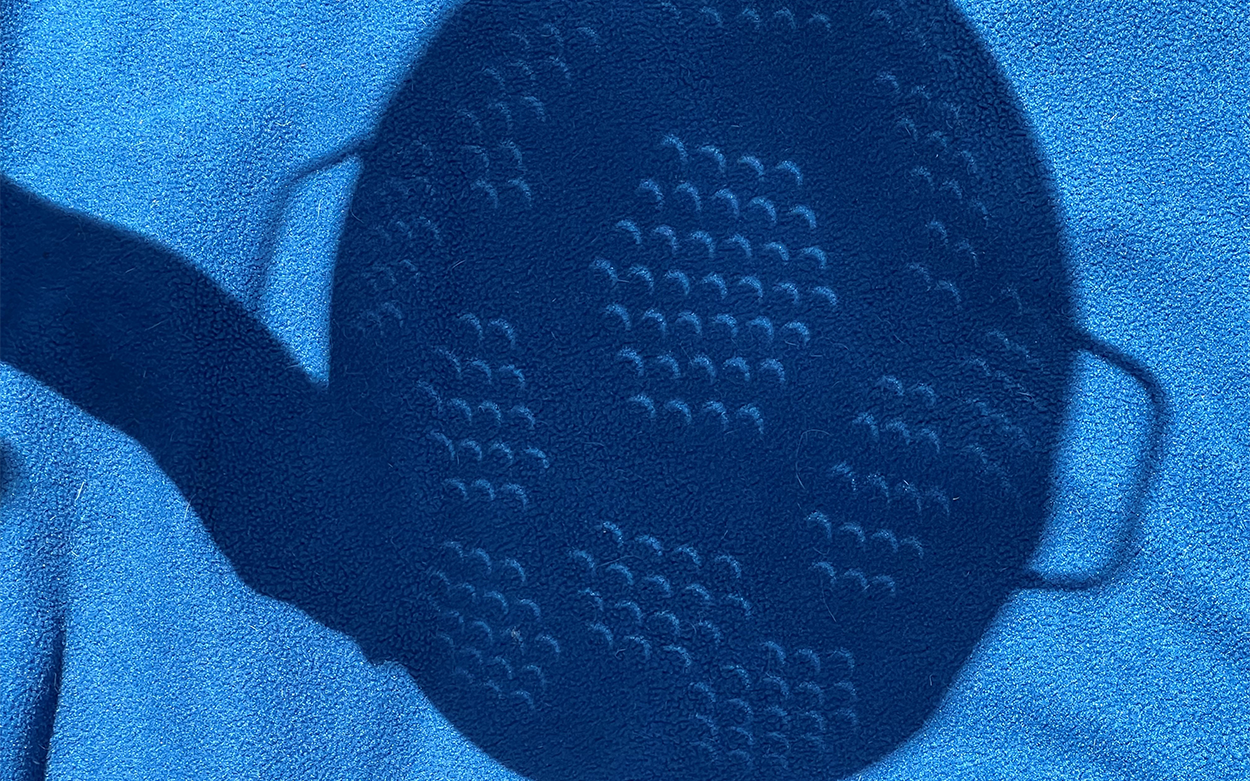
Crescent shaped shadows show through a colander during the solar eclipse. Submitted by Prof. Hannah Robbins.
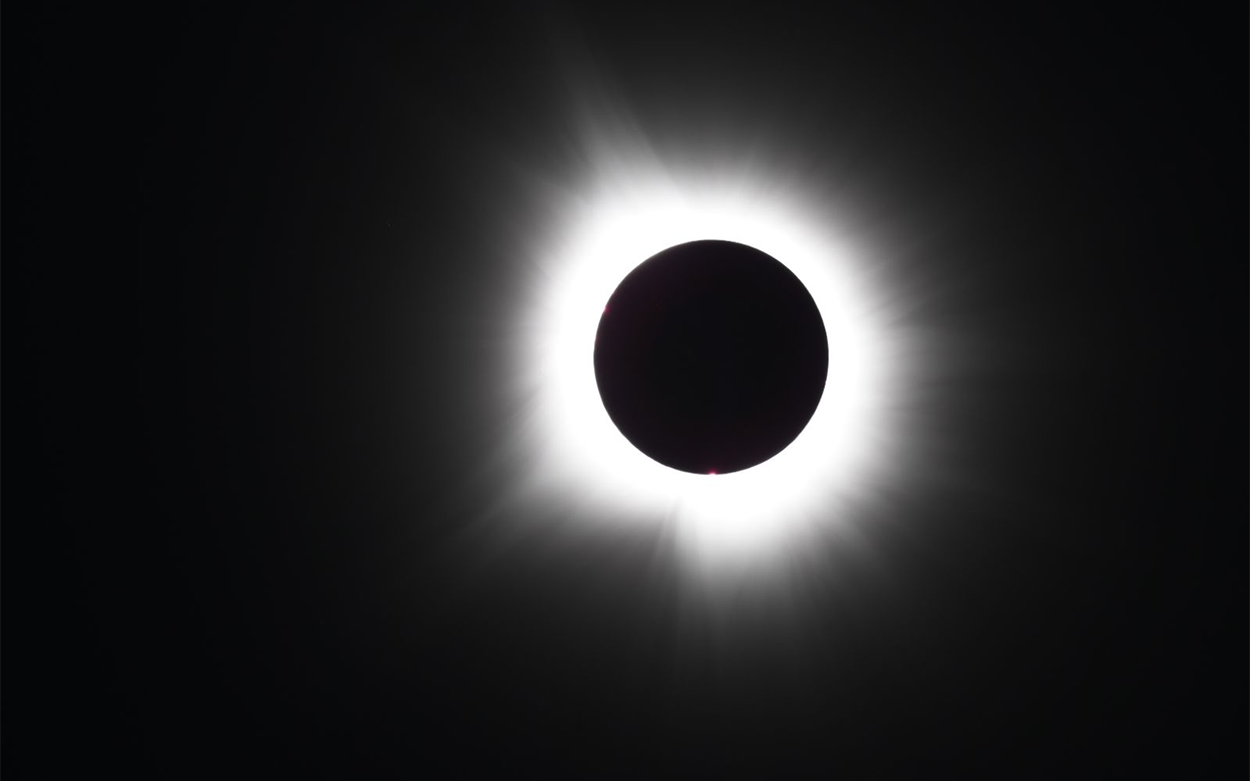
Total solar eclipse viewed from Conway, Arkansas. Submitted by Bonnie Price.
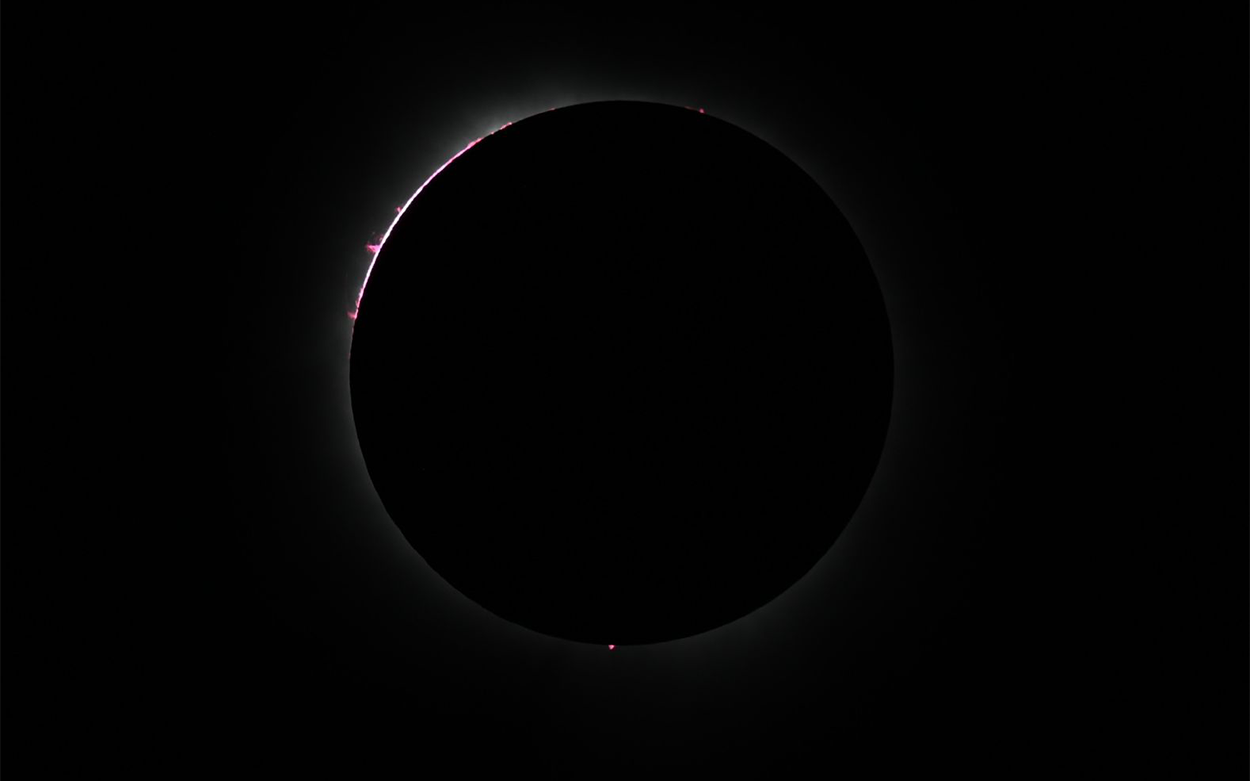
Total solar eclipse viewed from Conway, Arkansas. Submitted by Bonnie Price.
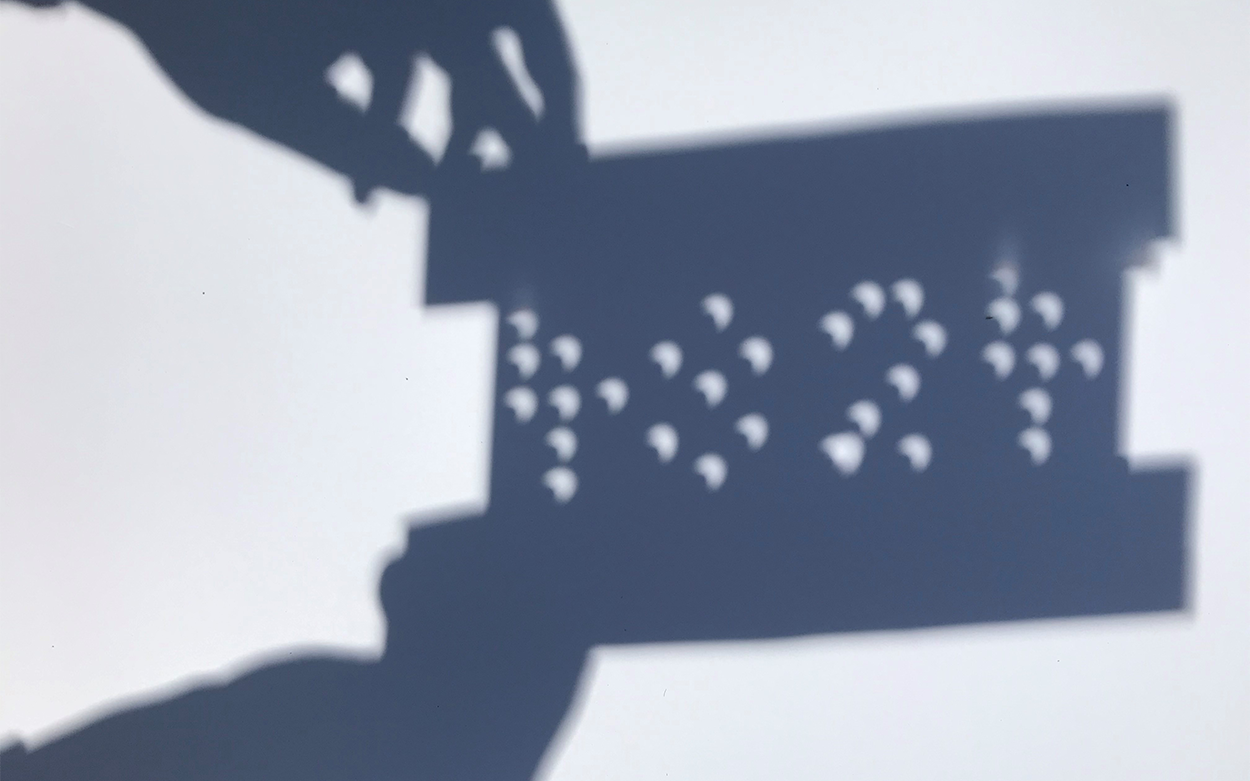
Shadow showing crescent shaped holes cut in pattern to show 4-8-24 the day of the total solar eclipse. Viewed from Conway, Arkansas. Submitted by Bonnie Price.
Original Post (April 2, 2024):
Astronomy class to host eclipse-viewing event
Americans from Texas to Maine are gearing up for a total solar eclipse on the afternoon of Monday, April 8, 2024, and while Roanoke College will not be in the path of totality, there will still be plenty of excitement as the moon eclipses the sun by roughly 86%.
Truong Le, a visiting assistant professor in the Math, Computer Science and Physics Department, along with some of the students in his INQ250 course, Astronomy Controversies, will host an eclipse-viewing event on the Back Quad beginning at 2 p.m. that day. Everyone in the Roanoke College community is invited to attend.
Le and his students will distribute eclipse-viewing glasses on a first-come, first-served basis. In case there are not enough pairs of glasses to go around, Le encouraged folks to share with friends. He also asked that those who leave the event early consider leaving the glasses for other students to use. Le’s students also will monitor multiple telescopes with solar filters, inviting guests to safely take turns viewing the eclipse through those devices.
A total solar eclipse happens when the moon passes between the sun and the earth, briefly covering the sun. This reveals the sun’s outer atmosphere, the corona. On April 8, the moon’s shadow will sweep across the U.S. from Texas to Maine. The eclipse will begin at 2 p.m. and last until almost 4 p.m.
After April 8, the U.S. won’t see another coast-to-coast solar eclipse until 2045, so don’t miss this opportunity to gather in curiosity and witness a stunning celestial event!